I was particularly excited to visit Borneo, especially after hearing about the pygmy elephants – much smaller than their African cousins but still impressive in size and absolutely fascinating to see in the wild. Along with elephants, you’ll also spot different species of monkeys and birds, including the famous rhinoceros hornbill and proboscis monkey.
In this guide, I’ll cover everything you need to know to plan your Kinabatangan river cruise, from what animals to expect, how long to stay, the best time to visit, and how to get there.
Why a Borneo Safari Should Be on Your Bucket List?
The Borneo Safari, often another way to refer to the Kinabatangan River Safari, was one of the top highlights of my time in Borneo. Seeing pygmy elephants, orangutans, and hornbills in the wild was absolutely surreal, and the jungle scenery was something else entirely. Whether you’re coming for two days or five days, every day offers a new adventure.
You’ve probably heard about Africa’s Big 5 – lion, leopard, elephant, buffalo, and rhino – originally defined by how hard and dangerous they were to hunt. But in Kinabatangan, the definition is different. It’s about rarity, difficulty to spot, and iconic status and they differ from what is considered Big 5 in whole Borneo.
Kinabatangan’s Big 5
- Pygmy Elephant
- Bornean Orangutan
- Proboscis Monkey
- Estuarine (Saltwater) Crocodile
- Rhinoceros Hornbill
Borneo’s Big 5
- Sunda Clouded Leopard
- Bornean Pygmy Elephant
- Bornean Orangutan
- Proboscis Monkey
- Malayan Sun Bear
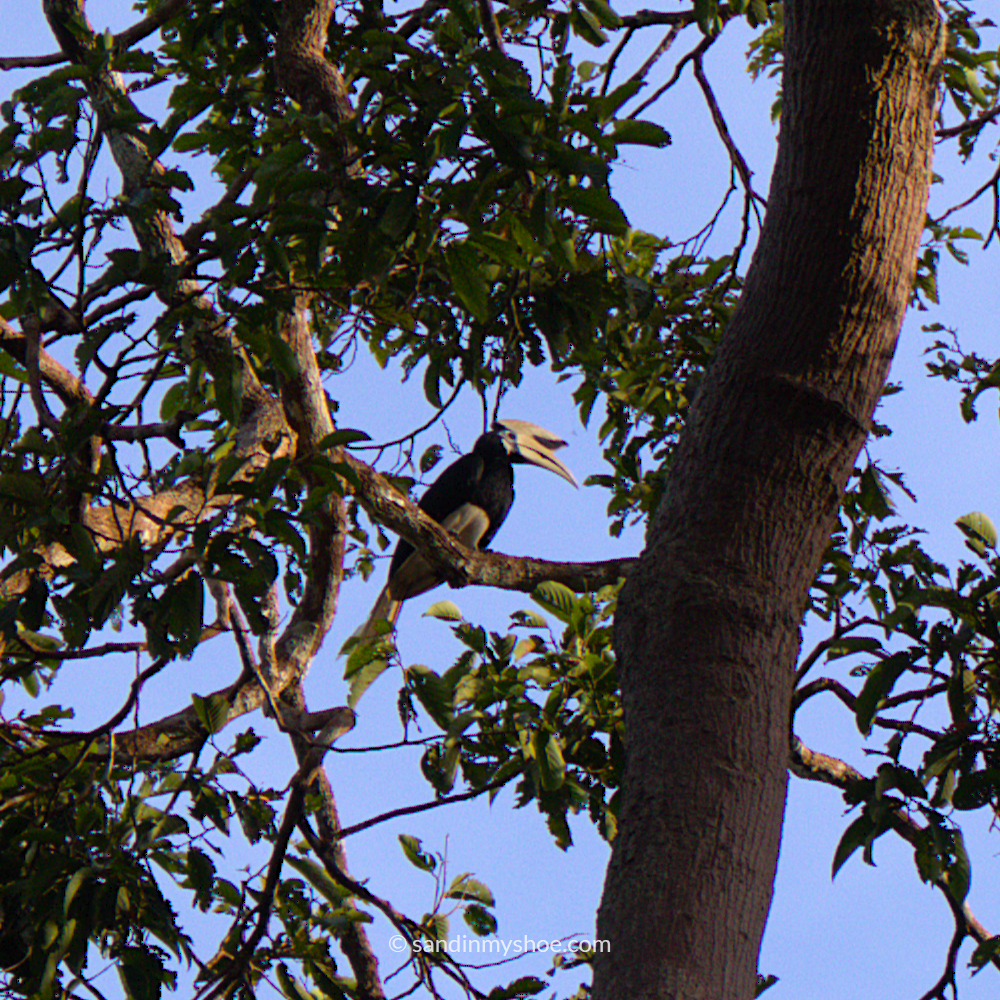
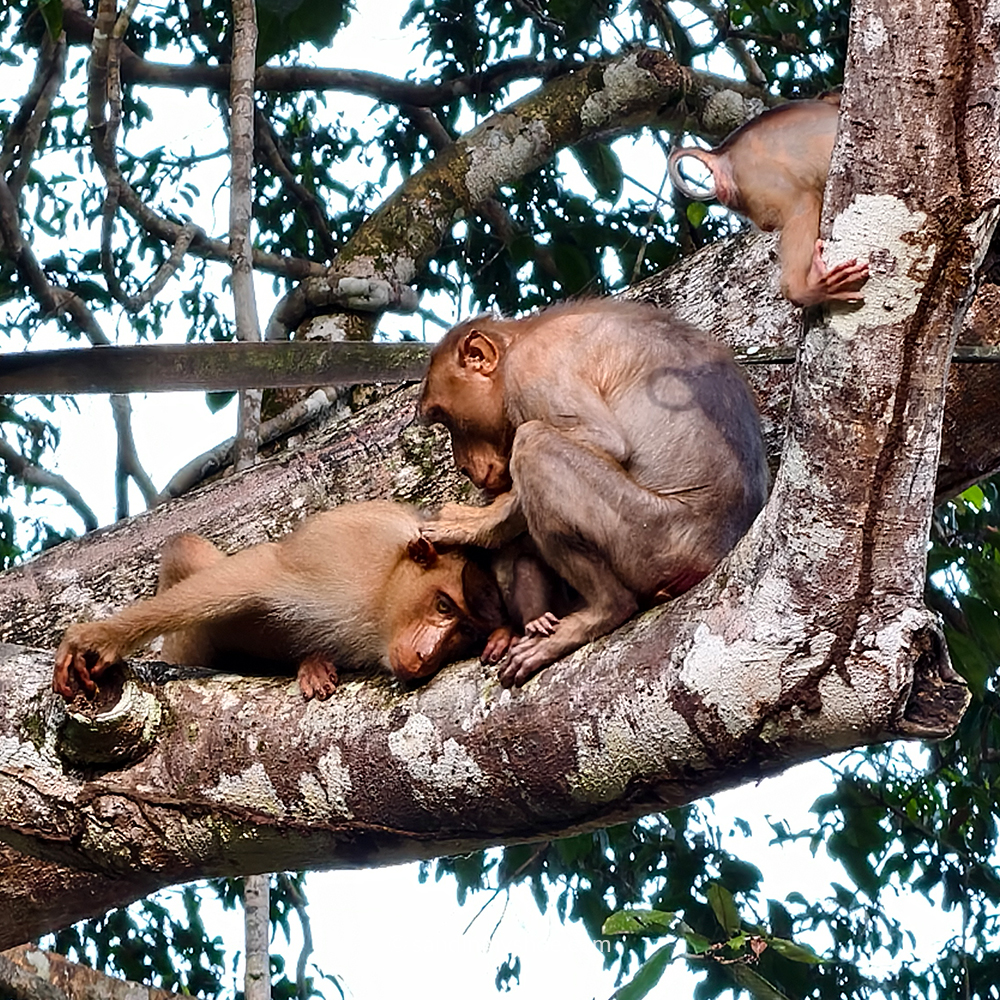
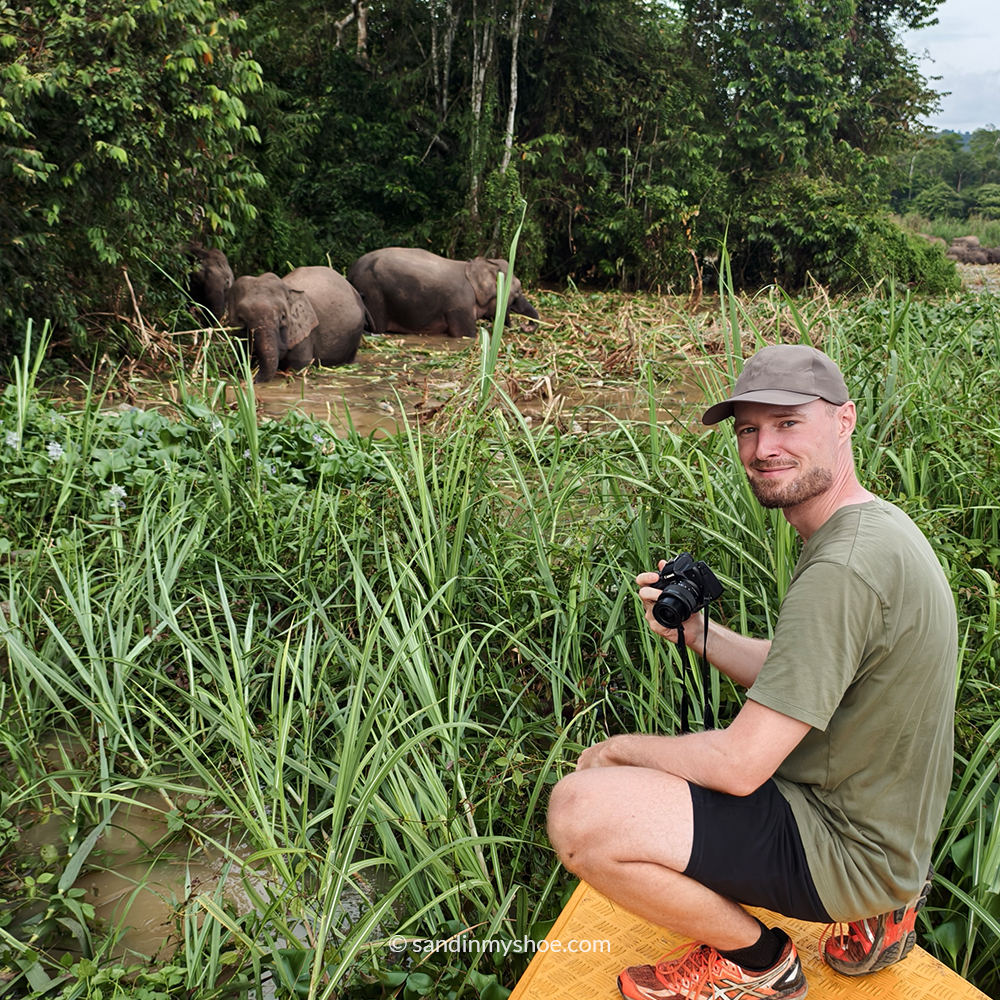
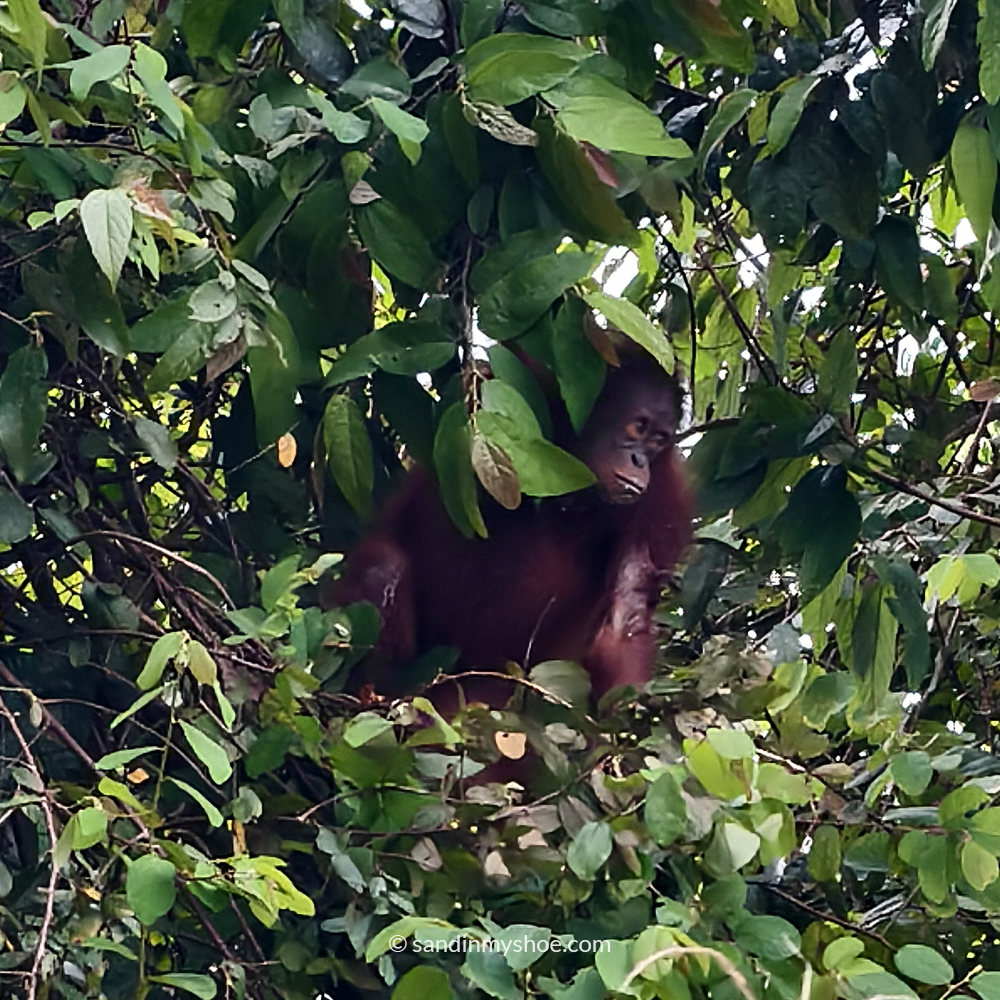
For me, the highlight was definitely spotting a herd of over 15 pygmy elephants having supper on the riverbank! And the Rhinoceros Hornbill up close was incredible – it seriously looks like an AI glitch with that extra upside-down beak. So pack your gear, charge your camera, and get ready for a truly wild Borneo safari!
Is It Dangerous?
Locals still swim in the river, even though it’s home to plenty of crocodiles. According to local legend, a deal was struck during Pagan times — before Islam arrived, and long before guns existed — where crocodiles and humans agreed not to harm each other.
But don’t let the legend lull you into a false sense of security. After firearms were introduced, humans started controlling the crocodile population with guns. Today, however, crocodiles are protected, and killing them is no longer allowed.
An anthropology PhD student I met — who spent six months living along the Kinabatangan River — told me that crocodile-related incidents with humans still happen almost every month.
So, in other words, stay in the boat and maybe skip the swimming! 😅
My own experience? A little too close for comfort.
On my first morning, I stumbled across a dog’s severed foot lying on the road — no dog in sight. Later, I had to cross a flooded road, knee-deep in murky water. I crossed it four times without thinking much about it… until someone casually mentioned that crocodiles often lurk in those waters.
Thankfully, the ancient pact held — at least for me that day. But make no mistake: the waters are wild, and danger is never far beneath the surface.
Best Time for Kinabatangan River Safari?
Visit during the dry season: March to October. Less rain means animals are easier to spot near the riverbanks, and the trails are in better shape for hikes. But remember, it’s still a rainforest – quick showers are totally normal even during dry seasons.
Borneo
Where is the Kinabatangan River?
The Kinabatangan River is located in the Malaysian state of Sabah, on the island of Borneo. It is the second-longest river in Malaysia, stretching over 560 kilometers through diverse landscapes, including wetlands and mangrove forests. The river is a key feature of Sabah’s tropical rainforest, offering visitors a chance to explore the region’s unique natural beauty. Unfortunately, much of the rainforest along the river has been cleared for agricultural purposes. However, there are still protected areas that provide a sanctuary for wildlife, offering a glimpse into the natural habitat that once covered the region.
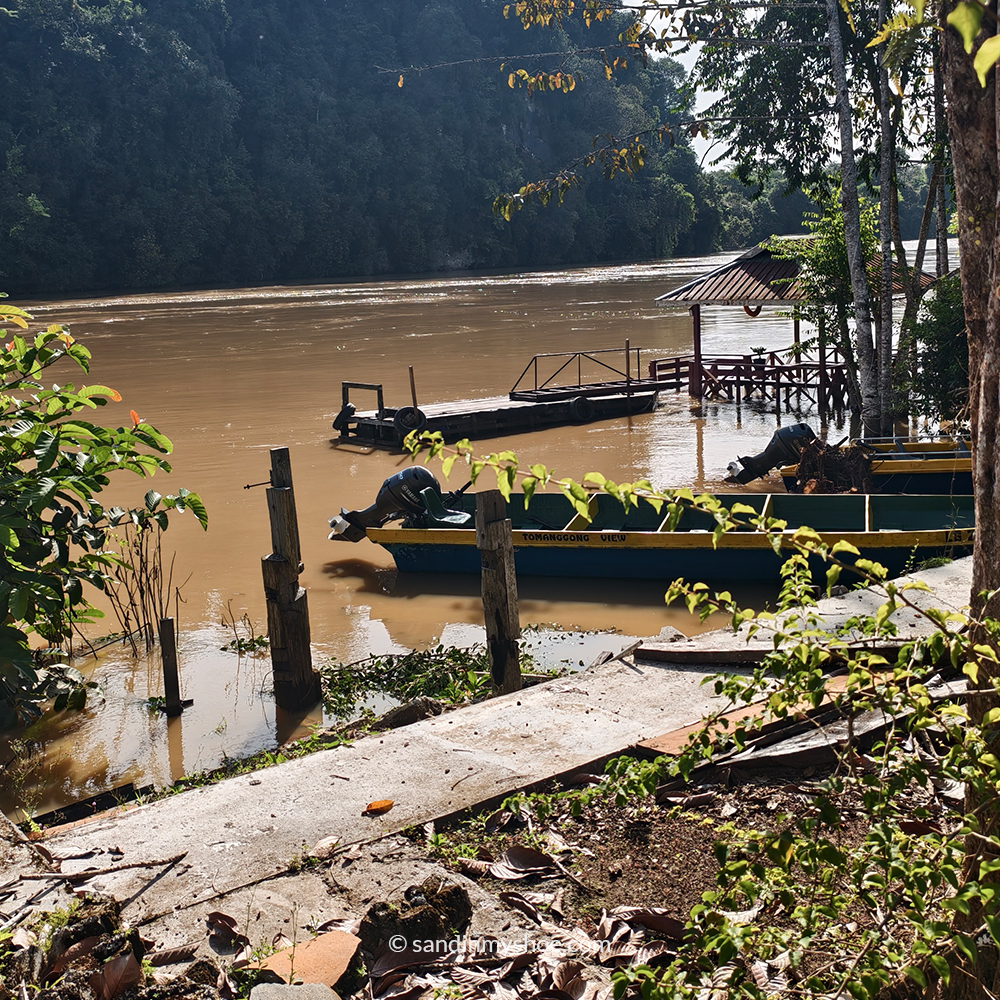
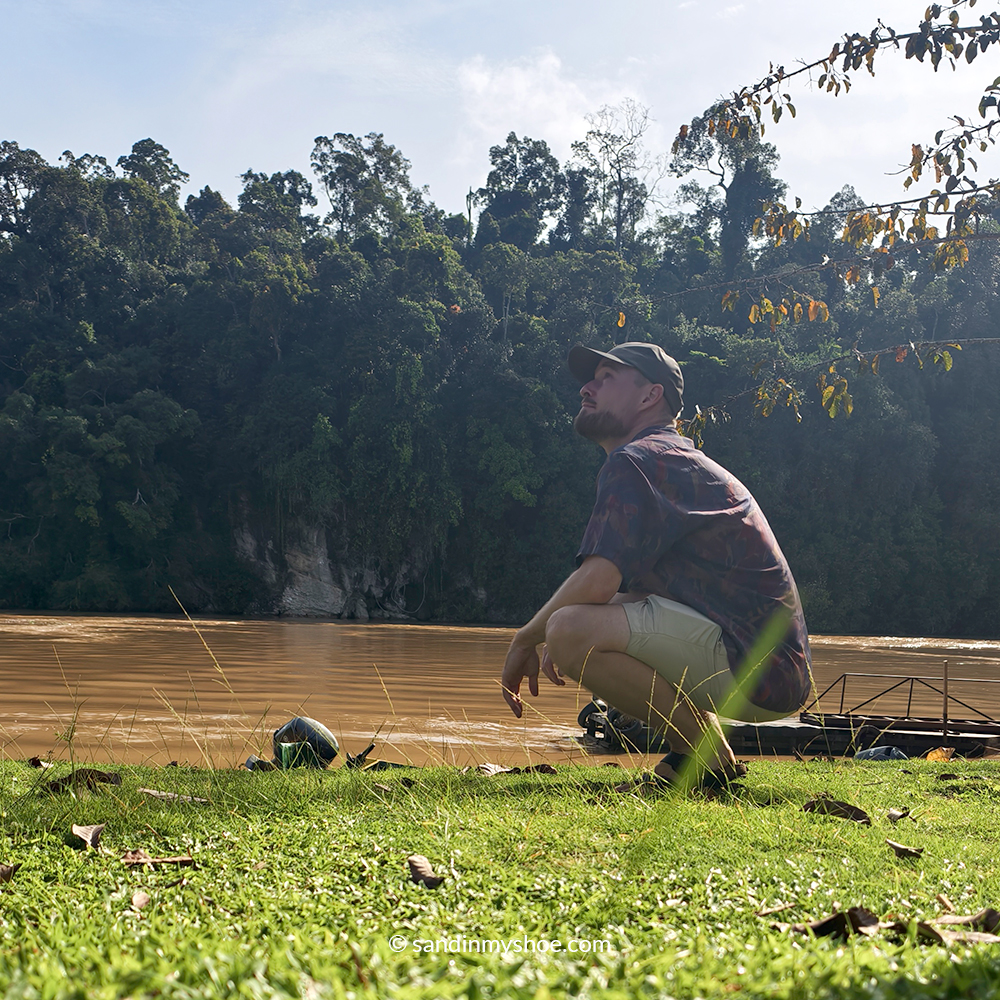
Kinabatangan River Wildlife Quick Guide
Daytime Wildlife (Non-Nocturnal)
- Proboscis monkeys (spotted)
- Long-tailed macaques (spotted)
- Silvered langurs
- Water monitors (big lizards) (spotted)
- Crocodiles (easier to spot if river isn’t flooded)
- Hornbills (Oriental Pied and Rhinoceros Hornbills) (spotted)
- Kingfishers (spotted)
- Egrets (spotted)
- Serpent eagles (spotted)
Less Common but Possible:
- Pygmy elephants (spotted)
- Orangutans (spotted)
- Storm’s storks (spotted)
- Wild boars
Very Rare
- Sun bear
Nighttime Wildlife (Nocturnal)
- Civets (spotted)
- Flying foxes (massive fruit bats) (spotted)
- Small bats (insect-eating species)
Less Common but Possible:
- Western tarsiers
- Slow lorises
- Mangrove snakes (spotted)
Very Rare Night Sightings:
- Leopard cats
- Clouded leopards
- Marbled cats
- Binturongs
How Many Days Do You Need in Kinabatangan?
There’s no guarantee you’ll see all the “Big 5” on your first day—it really comes down to luck and how many river safari cruises you go on. I stayed four nights and did six cruises in total, and I managed to see everything except the crocodile (flooding made them harder to spot).
Spending four nights gave me the perfect balance of adventure and downtime. I had enough time to explore, relax by the river, and even check out Gomantong Caves—plus hike all the way to the top of the mountain above it. Totally worth it for the views and the feeling of being deep in the wild. I’d definitely recommend staying at least four days if you want to fully experience what Kinabatangan has to offer without rushing. It’s peaceful, lush, and feels like a true escape from the concrete jungles we’re so used to.
What to Expect on a Borneo Safari in Kinabatangan
Kinabatangan is all about river cruises, river cruise and river cruises with occasional night trek in the jungle.
Each day, there are three different cruises available:
- Morning Cruise
- Afternoon Cruise
- Night Safari Cruise or Night Trek (for nocturnal animals – bring a flashlight!)
The Kinabatangan Big 5—orangutans, pygmy elephants, proboscis monkeys, hornbills, and crocodiles—are most often spotted during the morning and afternoon cruises.
Morning Cruise
The day starts early, usually around 6:00 AM, just as the first light touches the river. This is one of the best times to see the Big 5. The river comes alive as the sun rises, and it’s pure magic to watch. The morning cruise usually lasts about 2 to 2.5 hours. Afterward, you’ll head back to the lodge for a well-earned breakfast and a bit of downtime.
Afternoon Cruise
When the afternoon heat starts to ease, it’s time to hit the river again. The afternoon cruise usually kicks off between 3:00 PM and 4:00 PM and runs about 2 to 2.5 hours. Armed with updates from the morning’s sightings, your chances of spotting wildlife are even better. Keep an eye out for orangutans lazing in the trees, crocodiles sunning themselves, and pygmy elephants munching along the riverbanks. The golden light at this time of day also makes for some absolutely beautiful photos.
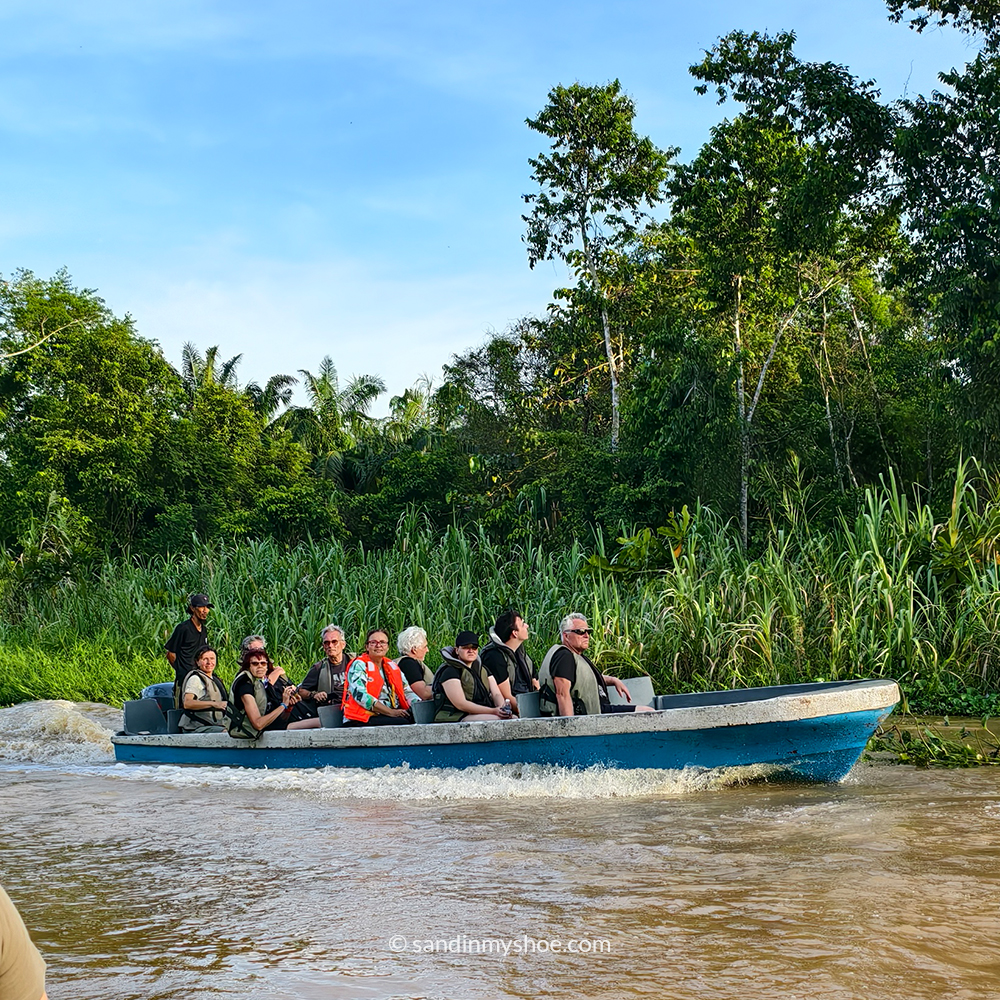
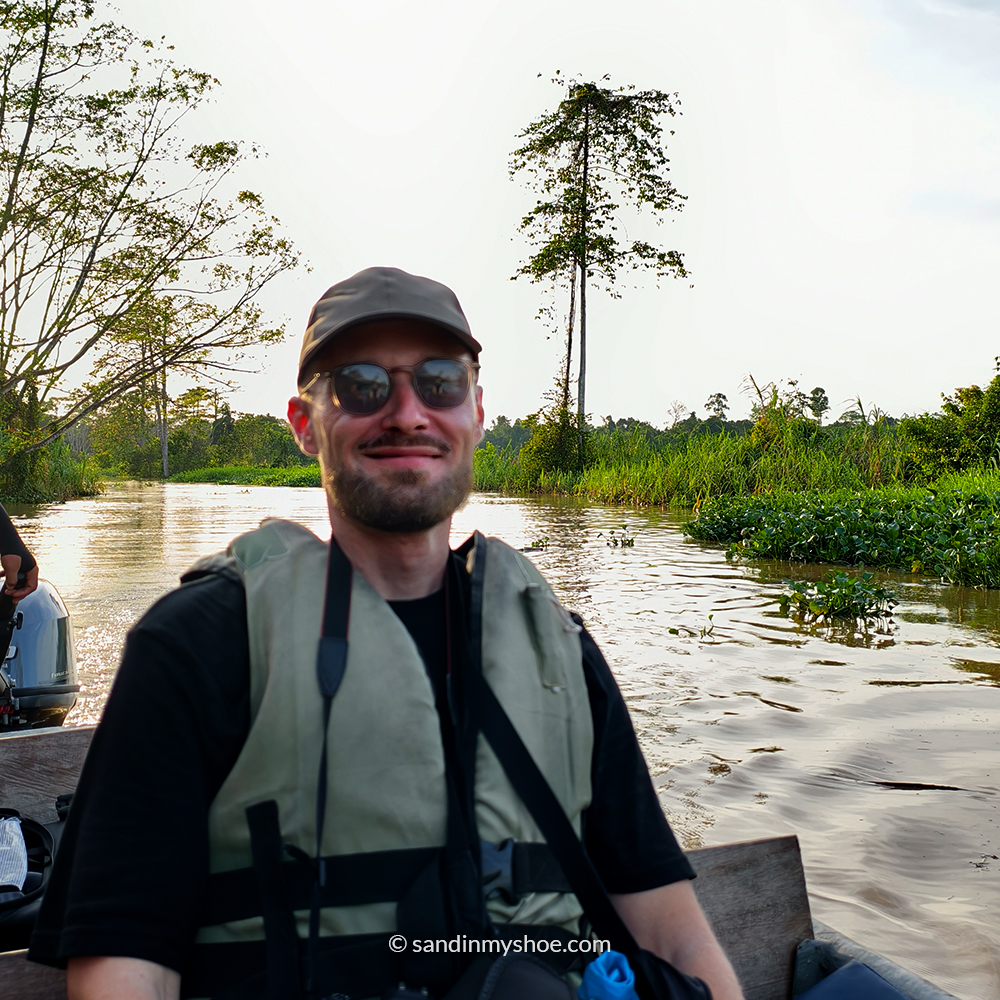
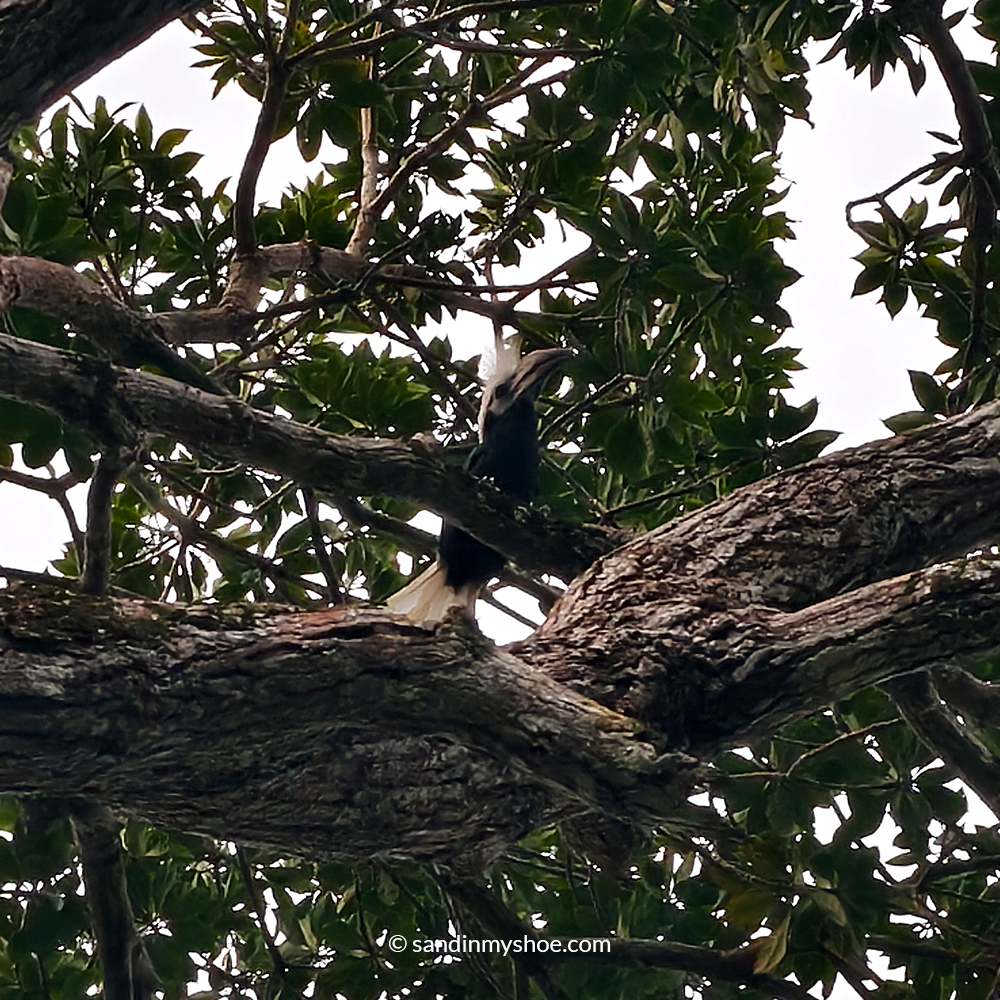
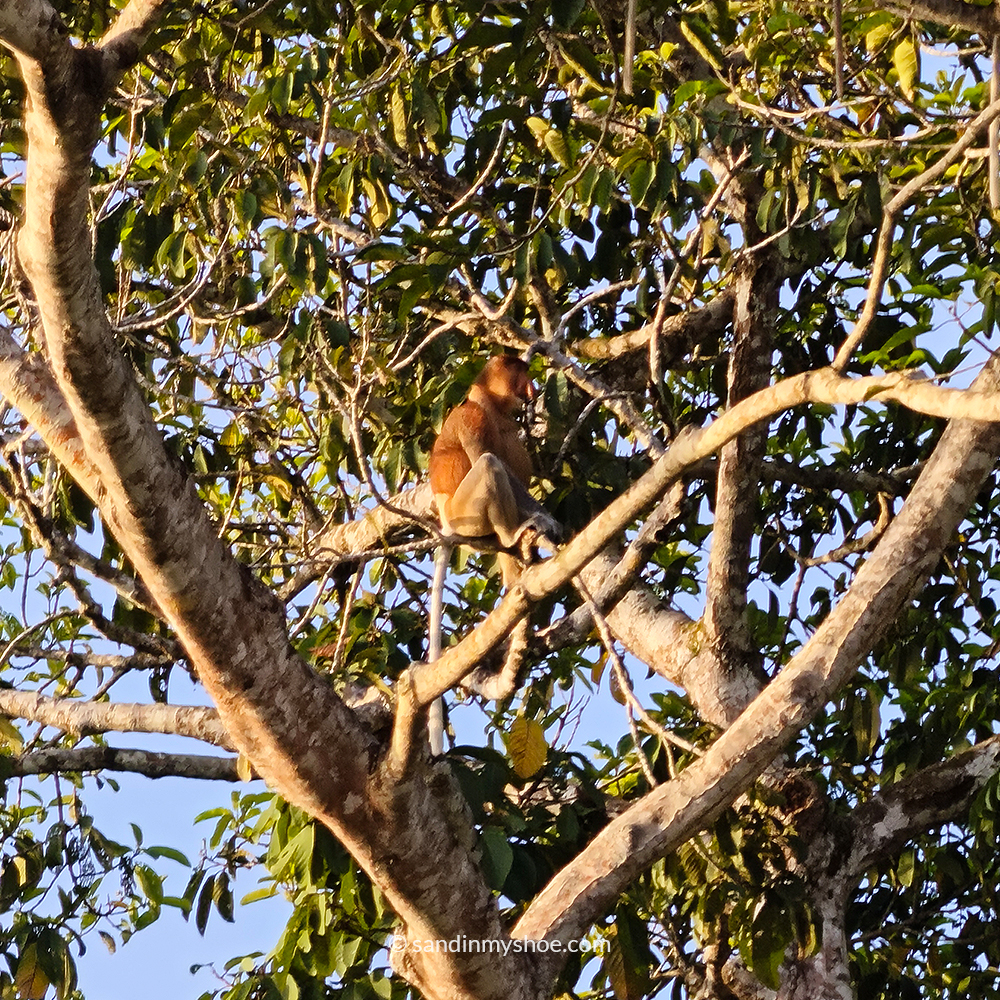
Night Cruise
After supper, the real adventure begins. The night cruise usually starts about 1 to 1.5 hours after you return from the afternoon trip.
This one’s all about the smaller and rarer creatures that are active during the night. Armed with flashlights, you’ll glide silently through the dark, hoping to catch glimpses of some of Borneo’s rarest nocturnal animals. If luck’s on your side, you might spot a Western Tarsier clinging to a branch, a Slow Loris peeking out from the trees, snakes draped over low branches, or even a rare Leopard Cat (you’ll need a serious stroke of luck for that!). During my night safari, I saw flying foxes—those massive fruit bats—and a few smaller bats swooping overhead and many birds just sitting on branches near the riverbank. Watching them was a surreal and unforgettable experience.
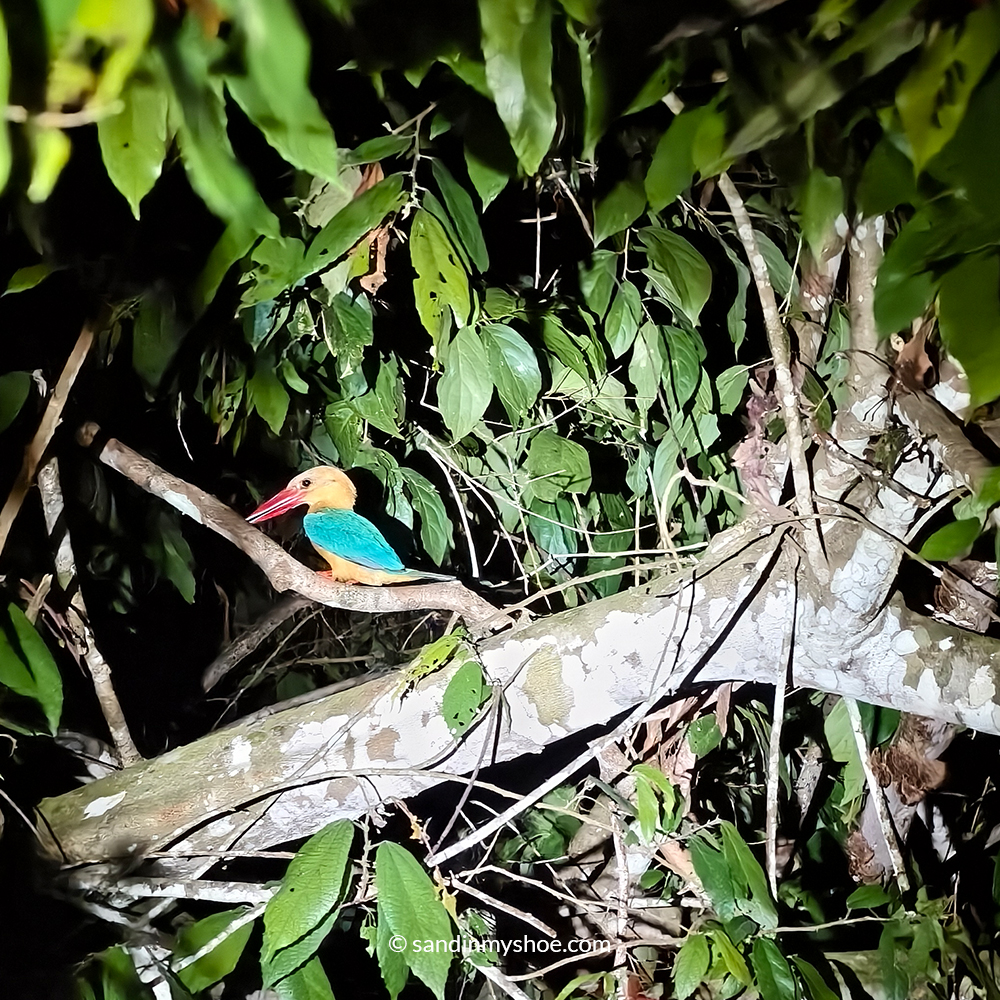
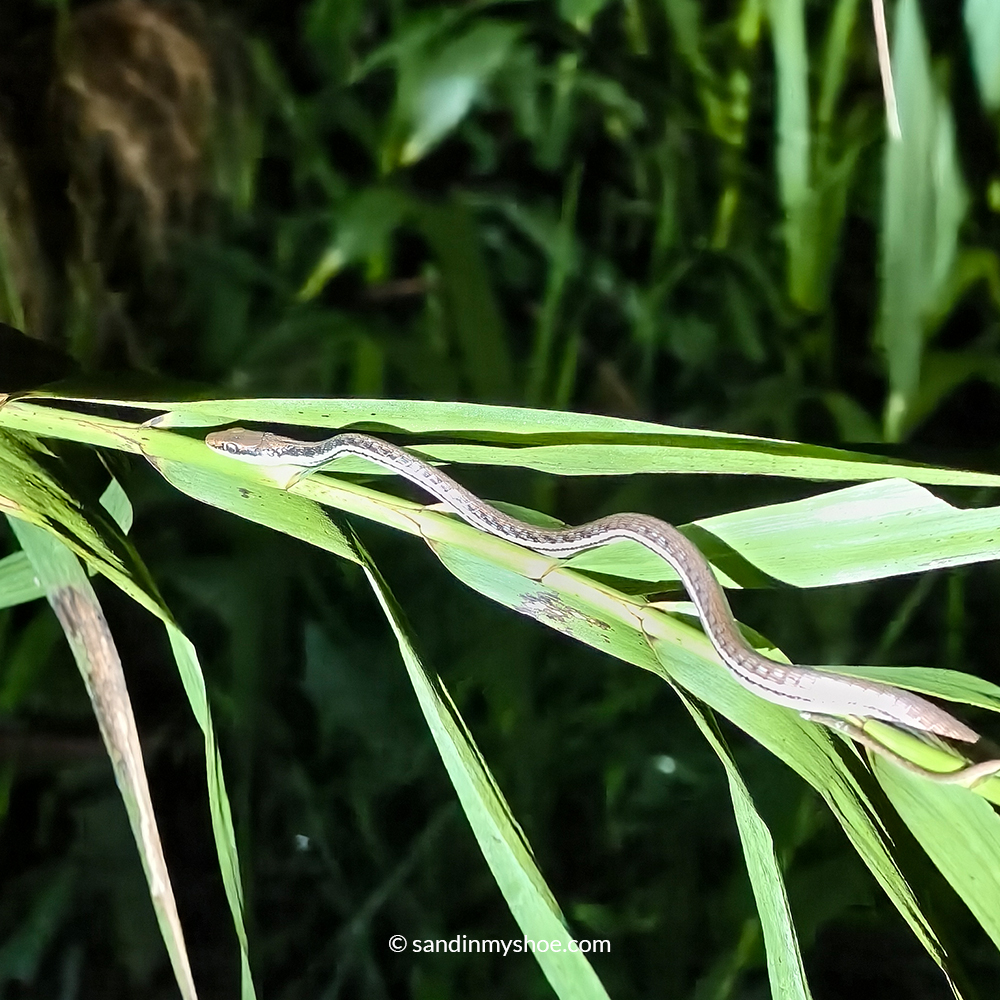
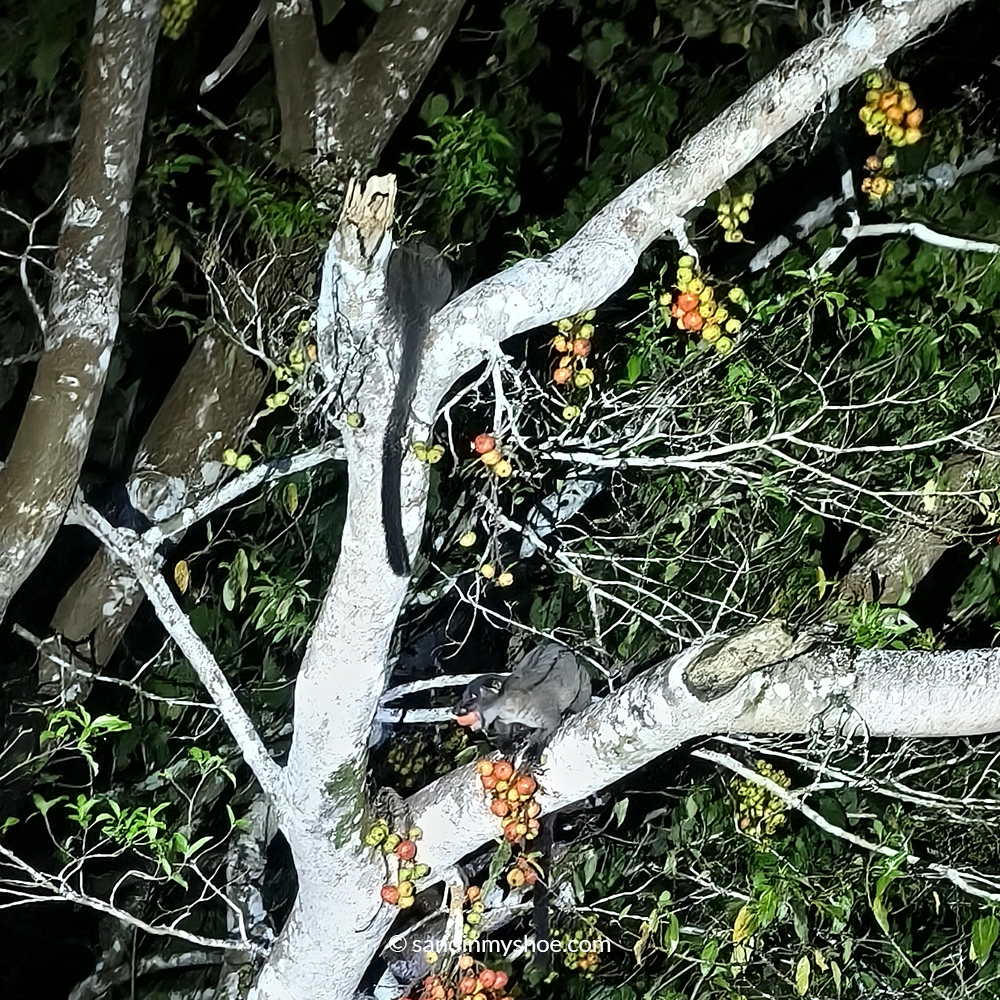
Extra activity: Gomantong Caves
If you have time to spare I’d highly recommend checking out Gomantong Caves.
The Gomantong Caves were once famous for their bird nest harvesting—used to make the prized bird’s nest soup. But after years of overharvesting, most of the birds have moved on, and the nests are now few and far between. These days, the cave is better known for something else: bats. Lots of bats. Over 250,000 of them.
Each evening, just before sunset—usually between 4 PM and 6 PM, according to locals—thousands of bats fly out of the cave in a dramatic spectacle as they head out to hunt for prey. It’s definitely worth checking out if you’re in the area!
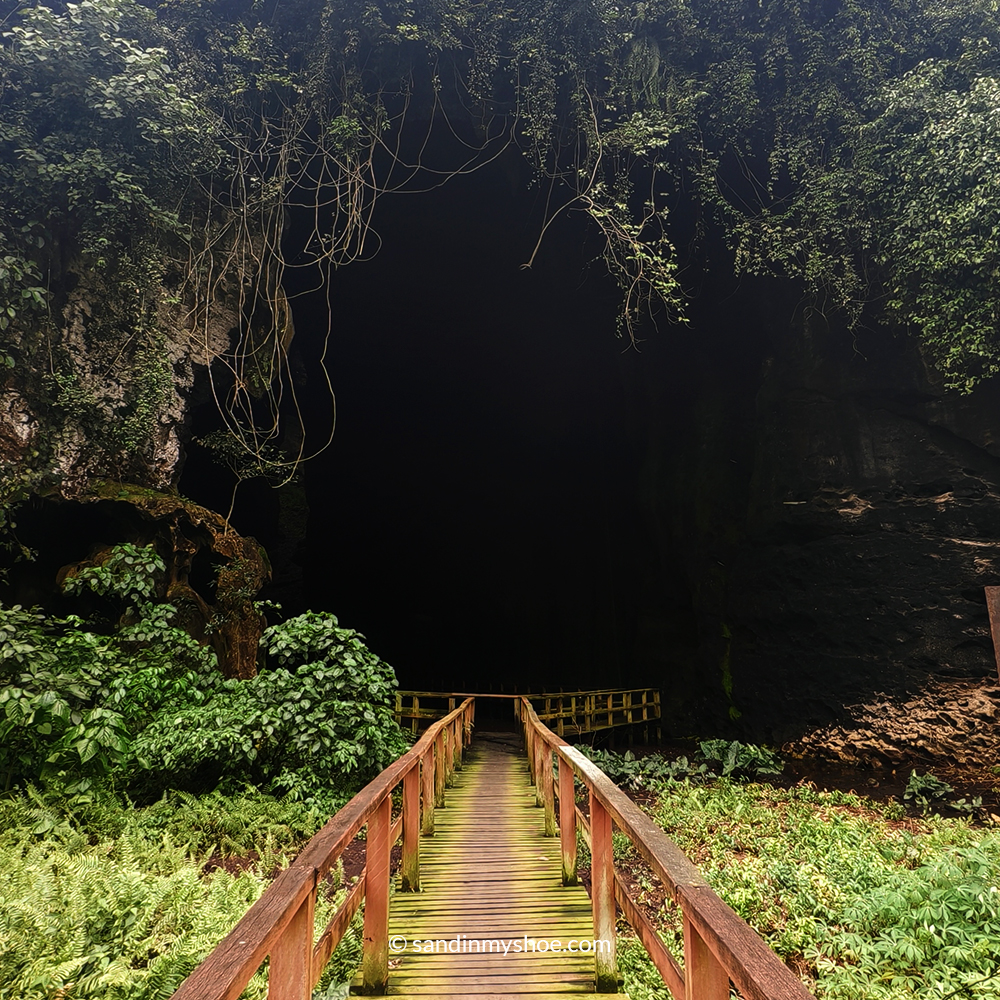
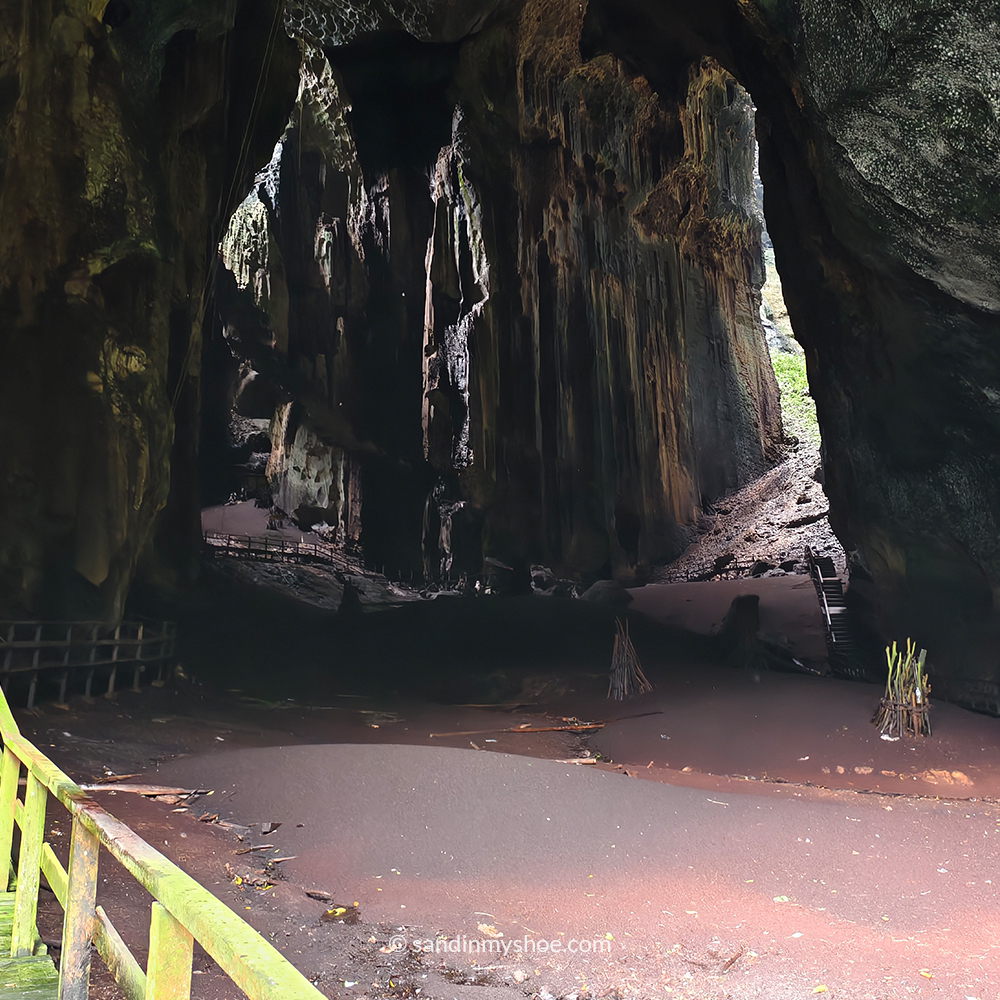
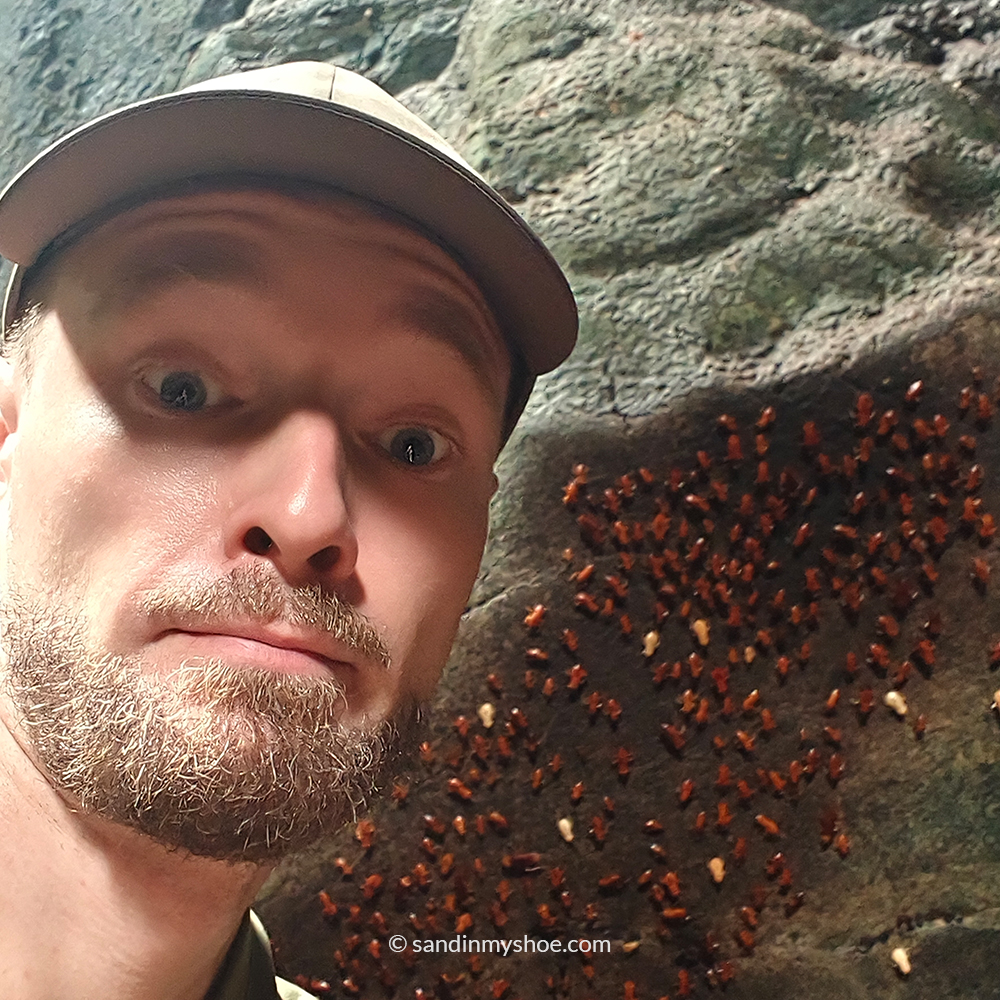
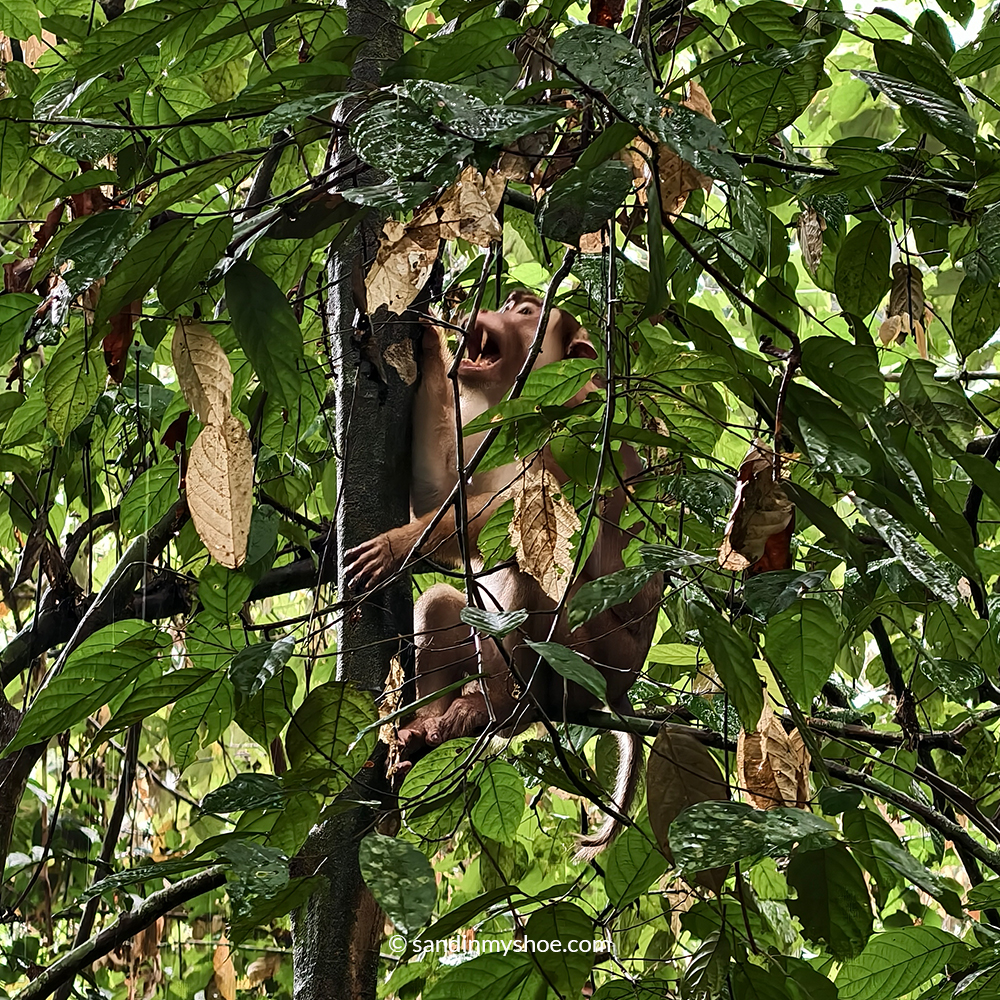
Just a heads-up though… the cave is also a haven for cockroaches. Yep—thousands of them, crawling on the walls, floors, and even the handrails. So if you’re squeamish, this might not be your favorite part of the trip.
After visiting the cave, you can do a hike up to the top of the mountain which takes around 30-45 min, and on the way, you might spot orangutans, long-tailed macaques, and red leaf monkeys. If you’re lucky, the encounters can be surprisingly close-up!
Just a little tip: don’t make eye contact with the monkeys—especially the macaques. They can see it as a challenge and get a bit feisty.
- Bring: water, snacks and rain gear
- Entrance: RM 30 for foreigners, RM 5 for locals
How To Book the Trip to Kinabatangan
Many tour agencies in Kinabatangan offer similar river safari experiences, so here are some tips to help you choose and save:
- Book ahead, especially during peak season, to guarantee your spot.
- Check Google reviews to find a reputable and knowledgeable guide. The guide’s expertise can truly make or break the tour experience.
- Most tour packages include accommodation, meals, and multiple river cruises, but if you’re traveling on a budget, it’s often possible to book river cruises separately after you have arrived to your accomodation in Sukau, Kinabatangan.
A Budget-Friendly Way to Experience Kinabatangan
Instead of booking a full package, I just booked accommodation first and then went around to different tour operators to book the river cruises separately. Some operators only accept bookings for guests staying with them, but a few welcomed walk-ins. By negotiating directly, I managed to pay RM 550 for six cruises. If you’re visiting outside of peak season and are flexible, this approach can help you save a significant amount.
How to Get to the Kinabatangan River
Most people base themselves in Sukau Village. The easiest option to get to Sukau Villiage is to book a Kinabatangan safari package that includes transport from Sandakan. These usually include lodging, food, and river cruises. If you prefer going there with the public bus or van from Sandakan or Sempora, follow the guides below.
How to get from Sandakan to Kinabatangan (Sukau)
Minivan
The easiest option is to contact Mr. Choy. He lives in Sukau and offers daily minivan transfers from Sandakan.
You can reach him on WhatsApp: 019-536-1889 or by email: choysukau80@gmail.com.
Public Bus
Head to the Sandakan Bus Station and buy a ticket to Lahad Datu. Tell the driver you want to be dropped off at Sukau Junction (about 2–3 hours).
- From Sukau Junction, you can either:
- Arrange a pickup with your accommodation beforehand, or
- Ask around at the junction for a lift into Sukau (expect to pay 30–50 MYR for the ~40 km ride).
Just make sure to leave Sandakan early enough so there are still people at the junction when you arrive. It’s definitely doable — and part of the adventure — but a little risky if you’re late!
How to get from Semporna to Kinabatangan (Sukau)
Head to the Semporna Bus Station early and catch the 07:30 AM bus. Buy the ticket in advance just to be sure. Buy a ticket to Sandakan (the day before) and tell the driver you want to get off at Sukau Junction. The trip to the junction takes about 4-5 hours.
Bus Schedules (Daily):
- Semporna ➔ Kota Kinabalu: 07:30 | 13:30 | 19:30
- Semporna ➔ Sandakan: 07:30
If the Sandakan bus is full, buy a ticket to Kota Kinabalu (little bit more expensive) instead — you can still jump off at Sukau Junction along the way.
From Sukau Junction, you can either:
- Arrange a pickup with your accommodation beforehand, or
- Ask around at the junction for a lift into Sukau (expect to pay 30–50 MYR for the ~40 km ride).
Make sure to catch the morning bus so that there will be people at the junction offering rides – I personally did it this way — worked out fine!
What to Pack for a Kinabatangan River Cruise
Here’s a quick packing list to make your Borneo safari more comfortable and productive:
- Binoculars
- Dry or Wetbag
- Sunglasses
- Alertness (I’d recommend coffee before leaving for the cruises)
- Zoom lens for camera
- Mosquito repellent
- Sunscreen
- Poncho or light rain jacket
- Comfy shoes – Flip-flops are fine for boat rides and lounging, but bring sturdier shoes if you plan on hiking.
- Safari hat (gotta look the part!)
- Earth-tone clothing (green/sand-colored)


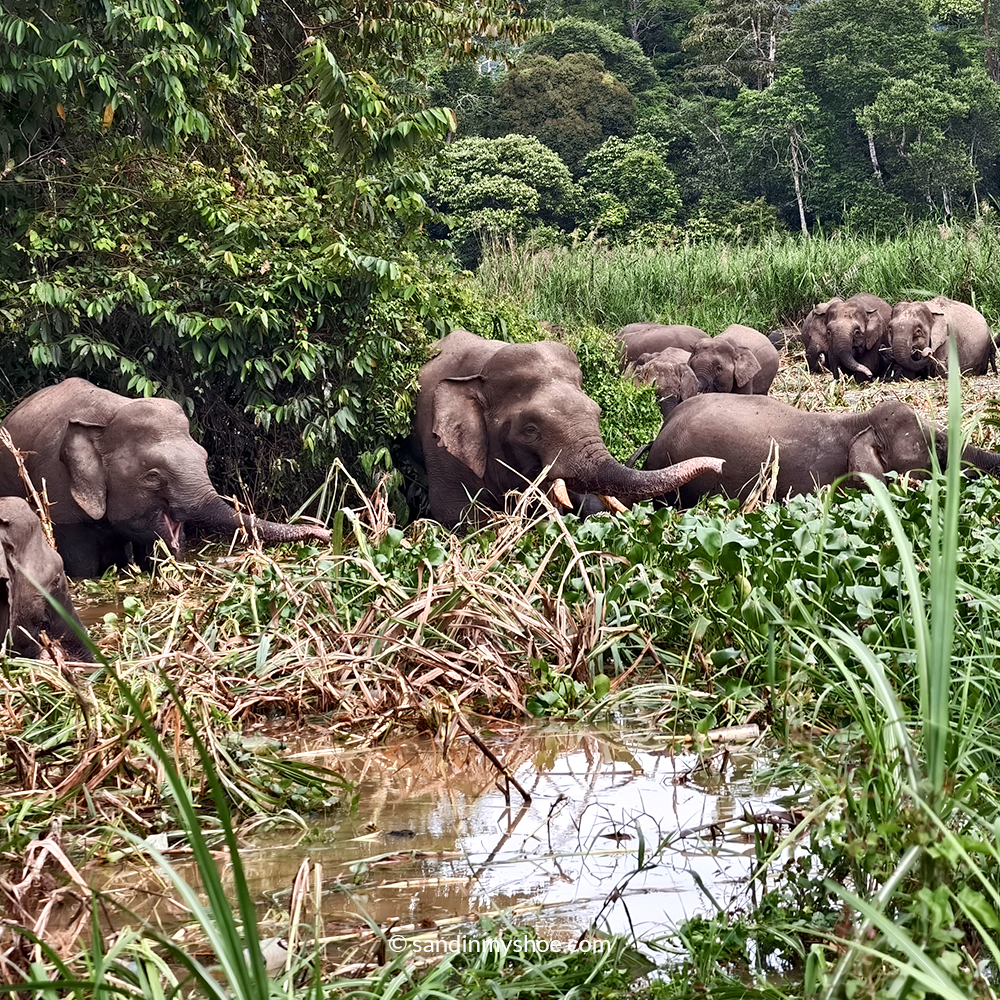



No comments yet, be the first one!
I appreciate hearing from you. If you have any suggestions, questions, or feedback, please leave a comment below. Your input helps ensure the information stays relevant and up to date for everyone.
Thank you for sharing your thoughts!